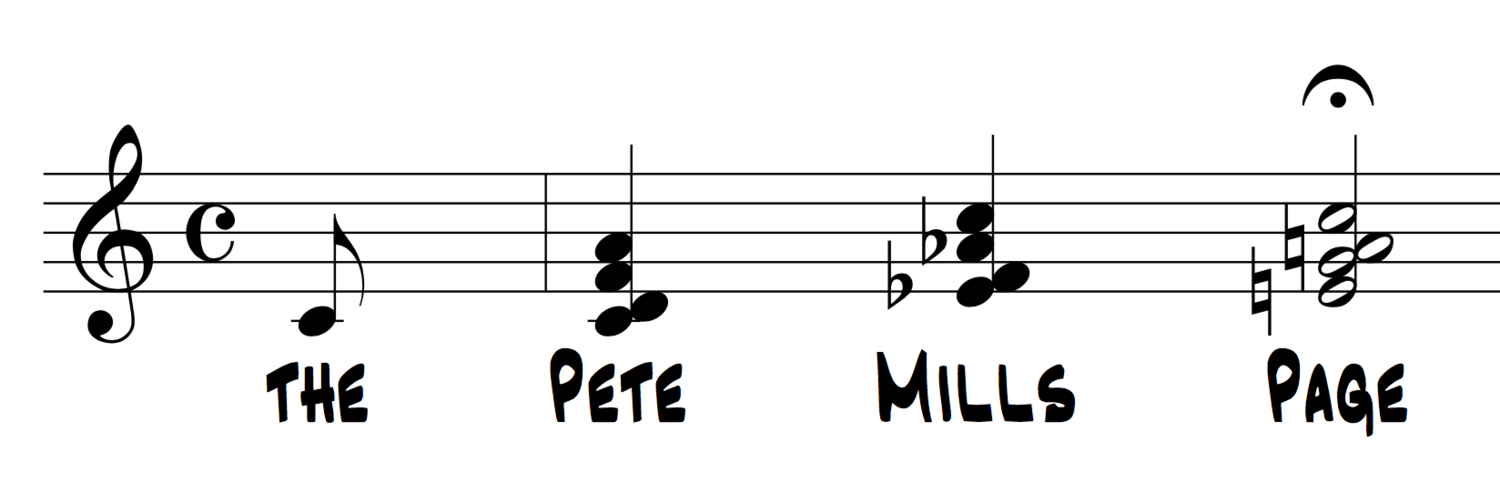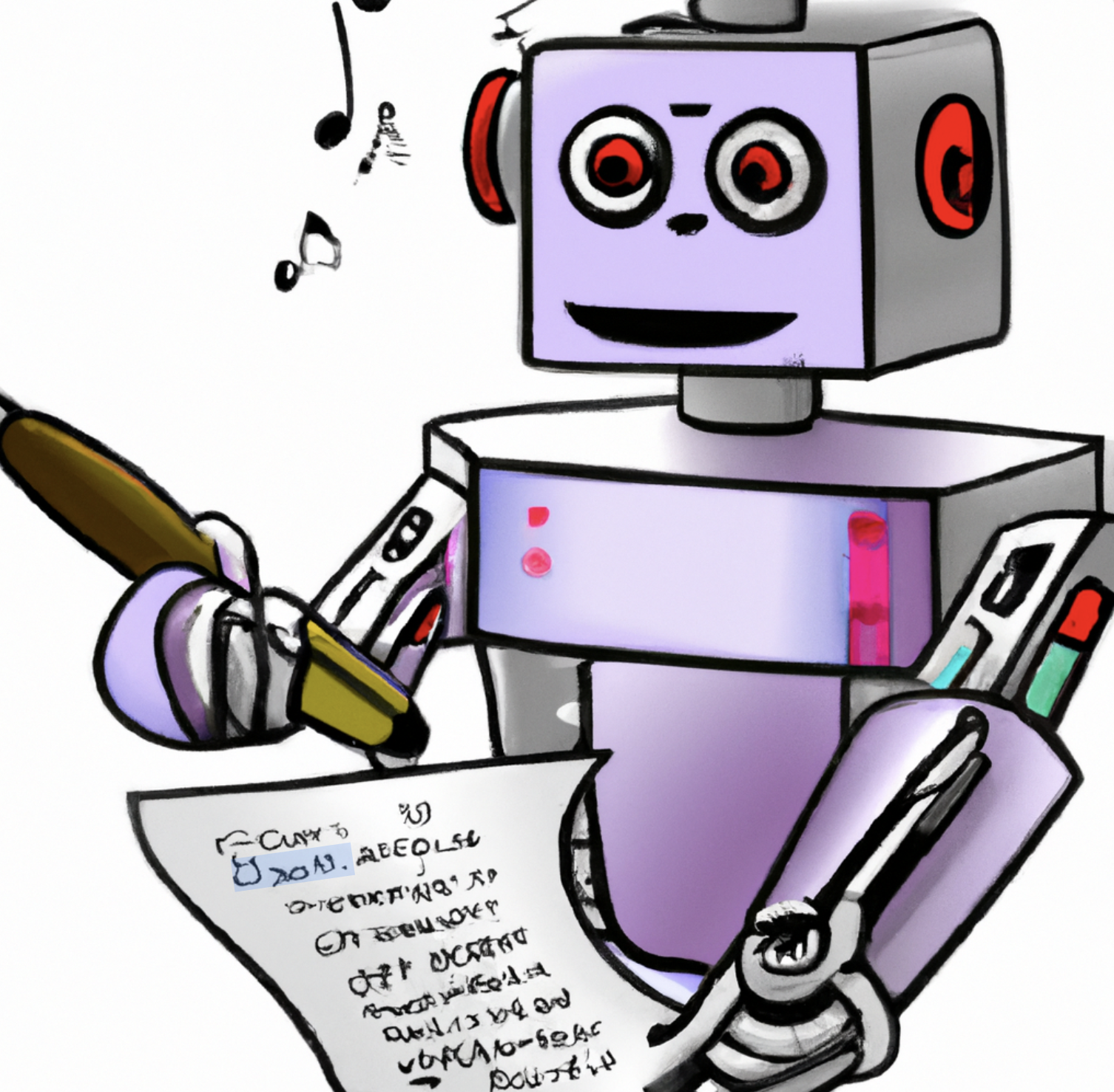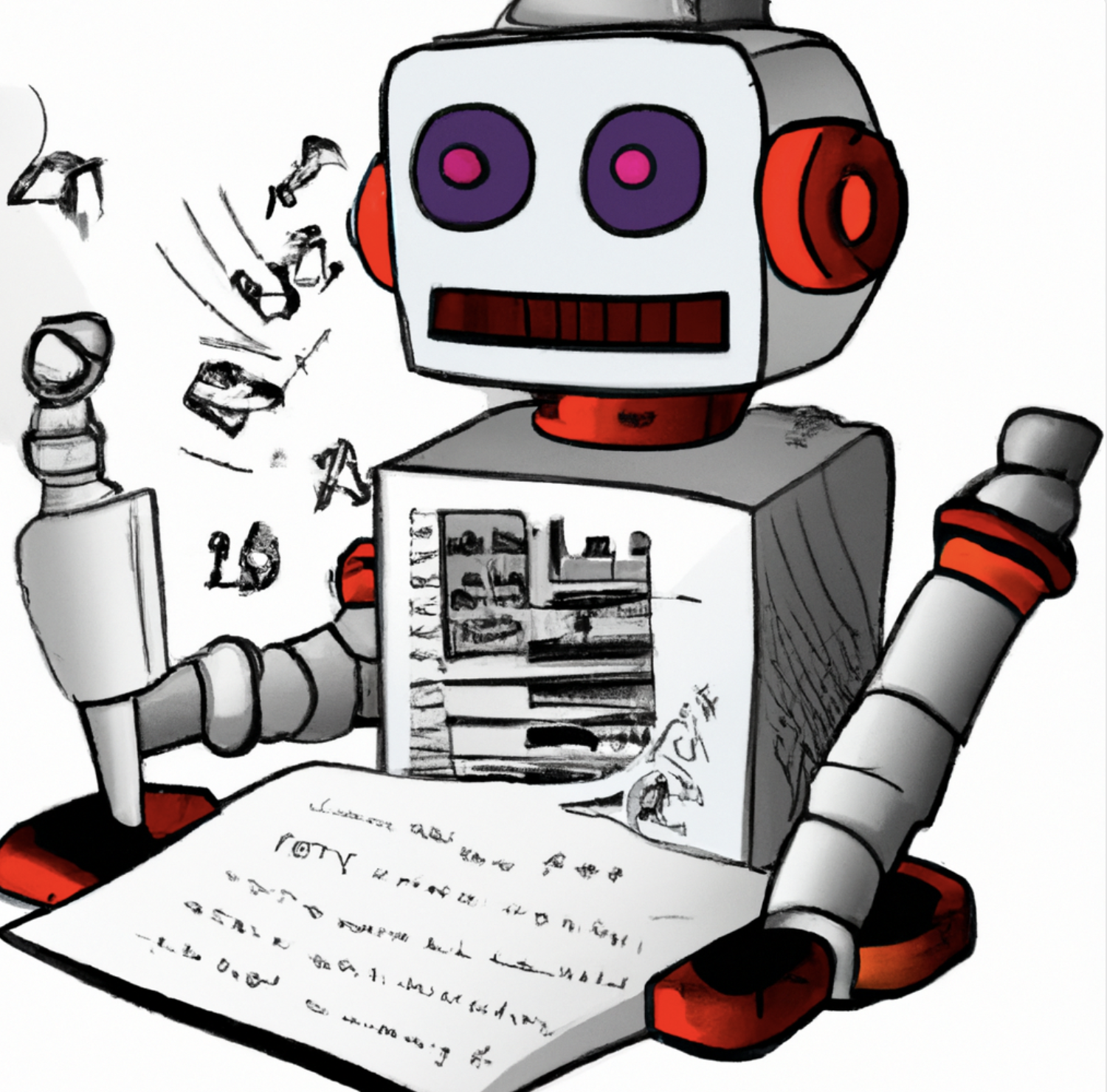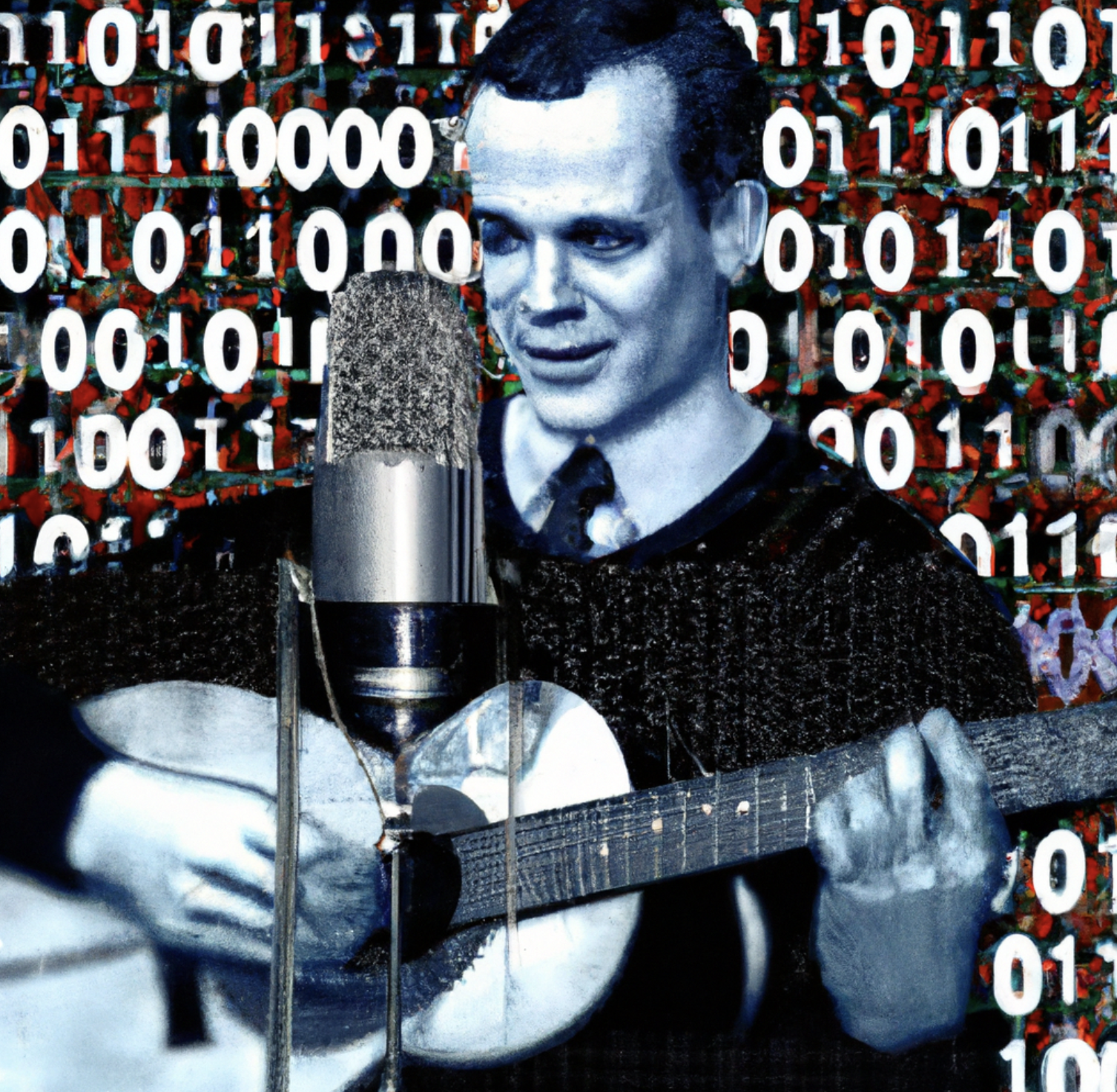A.I. Songwriting: The Best of the Bots
Years ago, I wrote a blog about some of the best lyric-editing apps for songwriters. In those days, apps that could improve an existing lyric were state-of-the-art. Most were strictly text-based, with only TuneUP offering any kind of musical component. Oh, how times have changed . . .
Editing apps have gone the way of the dodo, as the market is flooded with full-fledged generators — so-called “songbots” — that can not only write a lyric from scratch, but also to set it to original music, and even create a plausible demo of the song in some cases. In light of this rapidly changing landscape, I decided I was overdue for another blog post on the latest in songwriting technology.
Stanzalone
Stanzalone does indeed stand alone, as the first of its kind. Though it only generates lyrics, Stanzalone was the first bot to delve more deeply into the rules of rhyme and prosody, doing so at a much more sophisticated level than ChatGPT’s clumsy couplets. The tool is not specifically geared toward songwriting, but rather poetry in general. As such, it writes uniform and tidy stanzas — which can be a little too regular and boring to make for an interesting lyric. But the interface allows you to specify different poetic meters — iambic pentameter, dactyllic hexameter, and so forth. Different rhyme schemes can be selected as well: ABCB, ABAB, or even a few longer, fancier forms like limericks, sonnets, terza rima and ottava rima. So, in this way, a user might at least have different sections written in different meters and rhyme schemes, in order to get some variety in the lyric.
Though Stanzalone isn’t much used for lyric-writing these days, I tested it out by giving the bot a prompt that was, as close as I could tailor it, the set up for “Maria” from West Side Story. On the default pattern, called “common meter,” here’s what it wrote:
Tonight I met a special girl.
Maria is her name.
And now my head is all awhirl.
My heart is all aflame.Just for fun, I tried a limerick instead:
Tonight I encountered Maria.
And now I have just one idea,
Repeating her name,
For my heart is aflame
And her love would be my panacea.Okay, it ain’t Sondheim. But the technology was revolutionary, for its time.
2. Neural Noteworks
Think of Neural Noteworks as a counterpart to Stanzalone: it was the first major AI engine for musical composition. And, just like its counterpart, Neural Noteworks is not geared specifically to songwriting, but can be adapted to those purposes. The engine excels at mimicking existing styles. For example, here was the response when I asked for an ominous theme in the style of John Williams:
If the prompt and output look a bit simplistic by current standards, that’s because Neural Noteworks can only handle a limited number of parmaters per query. The compositional process builds organically, much as it might with a human composer, and typically begins like this, at the level of a motif. Once a motif in chosen, the bot is able to expand upon and develop an idea through a series of requests. So that, in relatively short order, by adding parameters like “propulsive rhythm” and “contrapuntal lines,” I was able to turn the sinister bass motif shown above into a shrieking orchestral climax:
The output is delivered in the form of a MusicXML file, presumably for maximum compatibility across various types notation of software. I imported it into Finale without any problems, and was impressed to see that the score included articulations and dynamics (though the latter are not in evidence in this excerpt.).
Neural Noteworks definitely has its uses, but as mentioned earlier, it is not particularly helpful for songwriting, since it delivers instrumental compositions — and its melody lines are often not suitable for a singer. However, this can be remedied a bit by asking the bot to write in the style of a particular song or songwriter. The result will still be instrumental-only, but usually it will be a bit more sing-able.
3. A.I. E-I-O
While rudimentary compared some of the technologies discussed below, A.I. E-I-O was quite possibly the first AI-based songwriting app that generated both original music and lyrics, billing itself as a “Songbot For Kids.”
The app creates short, ditties based on a title supplied by the user. The kind of intricate prompts and parameters that AI-users have become accustomed to on other platforms are not supported here. The AI simply takes your given title and spins it into a short song — with results that usually would not sound out of place on the latest Raffi album. I tested it out with the title “Zachary The Zebra.”
So, there are definitely some annoying aspects to this bot.
Songs are delivered in MuseScore’s .MSCZ format — and since I don’t have MuseScore, I had to get someone to convert it to XML for me.
All text is rendered in Comic Sans by default,
The exclamation point seems to be the only punctuation mark the bot knows how to use.
And similarly, C Major seems to be the only key it will write in — even when it puts the melody in an awkward register.
Harmonizations are mostly confined to I, IV and V, with the occasional secondary dominant.
But all of these drawbacks and limitations are quickly forgiven, because — let’s face it — it’s freakin’ adorable!
I wanted more! And happily, even though you can’t add any parameters beyond title, you can ask for a second verse . . .
Yes, the rhymes can be contrived, the content can be a bit “Wikipedia”-flavored — and the messages can be a little questionable for children, like when it assures them that zebras aren’t dangerous! But overall A.I. E-I-O remains one of the best bots around as far as its ability to deliver on what it promises.
4. The Turing Tessitura
Moving from the sweetly simple to the hopelessly highbrow . . . The Turing Tessitura is another “complete” songbot, capable of delivering both music and lyrics — but is geared specifically toward opera.
The interface has an interesting approach as far as how material is generated. The process begins with text only, creating ordinary prose in response to a prompt, (very similar to what ChatGPT does when asked to write a student’s essay!) Then, when you are satisfied with the text, you can choose to render it as a recitative or an aria.
In recitative mode, the prose remains intact, and is set to the natural rhythms of speech, with relatively sparse accompaniment. Alternately, if you choose aria mode, the bot will generate a free-form melodic adaptation based on the general themes and ideas contained in the prose version. (All scores are delivered as piano reductions in XML format, by the way). For my test drive, I decided to see if I could get the bot to channel Puccini, so I prompted it with the scenario for “Nessun Dorma” in Turandot, and asked for the recitative version first:
Interestingly, The Turing Tessitura also defaults to C Major — but only in recitative mode. Based on a few test runs I did, I believe the bot tends to write recit passages that do not remain in any one key for long . . . and thus it may be simplest to leave the key signature as C Major and make abundant use of accidentals. It’s also worth noting that I was asked to specify the voice type, and chose contralto — just to shake things up a bit!
In any case, I was impressed with the bot’s setting of the text, and decided to see what it could deliver in “aria mode.”
Quite plausible as well!
In case you were wondering: you can also provide the bot with a specific text for it to set, rather than having it generate text from a prompt. But it can only do that in recitative mode. Perhaps, in order to create more satisfying melodies worthy of an aria, the bot requires some license to choose the words it feels will work best. Still, it’s an interesting feature, and one that not many other bots out there have.
5. The Songularity
All right, all right . . . you were wondering if I was ever gonna get to it. Obviously the elephant in the room here, the 800-pound gorilla of songwriting bots, is The Songularity — which has set the bar so high that it’s unclear where the technology can go from here.
Among current pop songwriters, only Max Martin and Dr. Luke have more hit singles than The Songularity. And much like those esteemed gentlemen, the bot is a lot more than a mere “songwriter.” It’s a producer, in the fullest sense of the word. Unlike the other music generators discussed here, The Songularity does not traffic in XML files or notation of any sort. The bot delivers tracks — impeccably arranged and beautifully mixed tracks, with every ingredient of a chart-topping hit except the vocals. Which is not to say that the bot doesn’t know how to write melody and lyrics. The lead line is provided on a temp track with a synth sound playing the melody. And the lyrics are displayed in a kind of karaoke-screen video, synced to the playback. Once a singer has learned the song, they simply add their vocals into the mix, and voilà!
Of course, the industry’s embrace of the new technology is still something of a guilty secret, and thus has not been talked about much. In fact, it’s quite difficult as a “civilian” to get access to The Songularity. The technology is prohibitively expensive, costing well into six-figures for the full set-up. Fortunately, I was able to get a short session with the bot for the purposes of this article — though I was not allowed to keep any of the songs that I generated during my playtime. Which is a pity, because I’m telling you . . . there were some bangers!
(The folks behind The Songularity feel that it has a recognizable "sound,” which is why they didn’t want me to share any demos, as they might be a little too reminiscent of certain recent hit songs.). Suffice it to say, I was blown away by what I saw and heard, and I was left to wonder what role is left to we poor organic creators.
6. Number Cruncher
Now here’s a songbot after my own heart — and after my job too! Number Cruncher writes showtunes and nothing but showtunes. For my money, it is the most successful example of what I call the “niche-bots.” These are AI generators that focus on a particular genre.
When computing power reached a certain tipping point, “big data” was born. Neural net computers sift through and assimilate vast amounts of information, and in so doing, they are able to “understand” things in a way that machines never have before. This has led to new insights in medicine, in marketing, and a host of other disciplines. In creative fields, the big-data, machine-learning approach has led to a mastery of “style.” Computers are able to ingest so much material and analyze it in such detail that they can, in effect, discover the unwritten rules behind a genre or style — and create their own nearly-indistinguishable specimens of it.
But because “songs” comprise such a vast catalogue, even big data has been a bit daunted. Bots have done best when they narrow their focus. I have tried out many of these niche-bots. Among the more noteworthy (pun intended):
MIDI-Journey: generates 1980s rock tunes in the style of Journey, minus the Steve Perry or Arnel Pineda vocals.
DOLL-E: Despite having Ms. Parton as its namesake, the kind of country music generated seems decidedly more “male” . . . a lot of pickup trucks and whiskey.
GPT Chant: no connection to ChatGPT. Chant bills itself as a “spoken-word” generator, but rap is clearly the intended genre. Output is a computerized voice speaking densely-rhymed lines in rhythm to a track — and it manages to be both impressive and cringe . . .
Android Webber: reader, I must confess, I didn’t get the joke at first. I thought, “what — is it not available for iPhone?” Once I tried it out though, I recognized those unmistakeable echoes of Sir Andrew (along with his unmistakeable echoes of others.)
But Number Cruncher puts ‘em all to shame. Why? Because more than any of the others (even The Songularity) I feel the presence of a genuine creative spark in some of the songs that the Cruncher writes. Take, for example, this cheerful little earful, generated when I asked the bot to write a song that would make a songwriter like me feel better about being replaced by a machine. Well it did cheer me up . . . and depress me at the same time. But either way, it makes for a perfect closing number.













